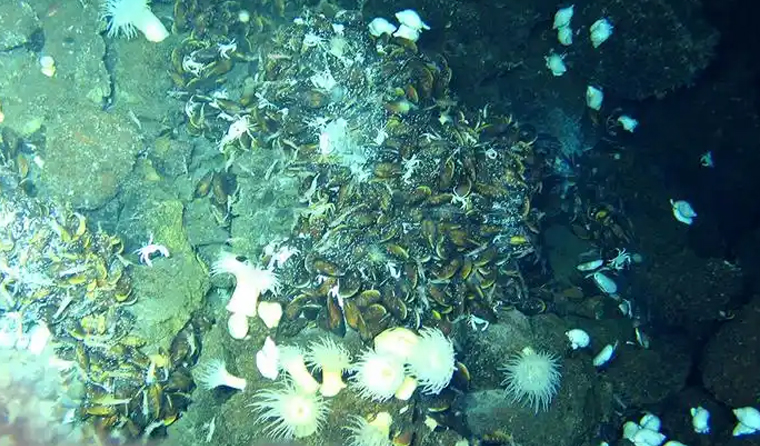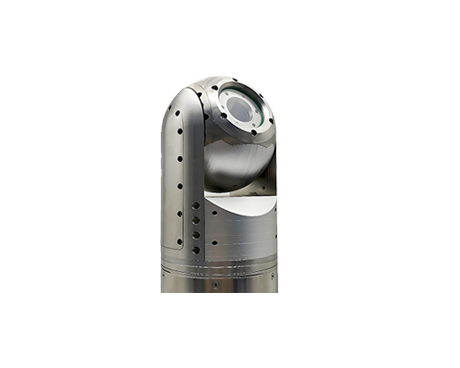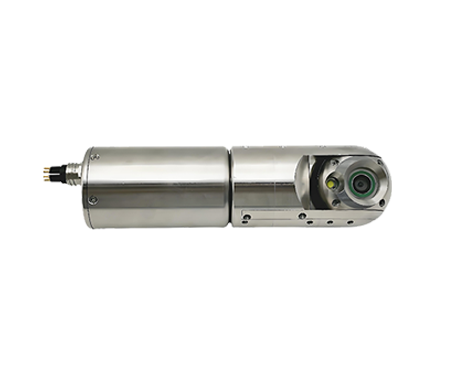
As a core device for visual monitoring in aquaculture, the performance and service life of underwater aquaculture cameras depend not only on the equipment's own performance but also on operations such as installation and commissioning, environmental adaptation, and daily maintenance. To ensure stable operation of the equipment and accurate acquisition of monitoring data, the following key precautions are summarized from four dimensions: environmental adaptation, installation and commissioning, operation and maintenance, and safety protection.
1. Core Standard Expression
"Add to Cart": This is the most widely used and universal expression, suitable for almost all types of foreign trade websites (such as B2C platforms like Amazon, eBay, or independent brand websites). It is concise and intuitive, and consumers can quickly understand its meaning. Example: "Click the 'Add to Cart' button to purchase this underwater aquaculture camera."
2. Alternative Expressions for Different Scenarios
-
"Add to Shopping Cart": More formal than "Add to Cart", it is often used on brand official websites with a more rigorous style or B2B2C integrated platforms. Example: "After confirming the product specifications, please click 'Add to Shopping Cart' to proceed to checkout."
-
"Add to Basket": Commonly used in British English scenarios, such as British e-commerce platforms (e.g., Tesco, ASOS). If the target market is the UK or other English-speaking countries that follow British English standards, this expression is more in line with local usage habits. Example: "This 30-meter pressure-resistant underwater camera can be added to your basket with one click."
-
"Add to Wishlist/Cart": When combining the wishlist and shopping cart functions, this combined expression is often used to meet the dual needs of consumers for temporary collection and immediate purchase. Example: "You can choose to 'Add to Wishlist' for later consideration or 'Add to Cart' for immediate purchase."

VI. What Temperature Range Is Suitable for Underwater Cameras?
The operating temperature range is a key technical indicator of underwater cameras, directly affecting their stable operation, imaging quality, and service life. Different application scenarios (such as freshwater aquaculture, marine aquaculture, and deep-sea exploration) have varying temperature conditions, so selecting a camera that matches the temperature environment is crucial. This article will detail the suitable temperature range for underwater cameras, analyze the impact of temperature on equipment, and provide adaptation suggestions for extreme temperature scenarios.
1. Conventional Operating Temperature Range: Covering Most Aquaculture Scenarios
Most commercial underwater cameras are designed based on the temperature characteristics of mainstream aquaculture and underwater monitoring environments, with a relatively unified conventional temperature adaptation range:
-
Operating Temperature: Generally between 0℃ and 40℃. This range can fully cover temperate and subtropical aquaculture scenarios, such as freshwater ponds (grass carp, crucian carp breeding), coastal net cages (grouper, sea bass breeding), and industrial recirculating aquaculture systems. In these environments, the water temperature rarely exceeds the upper or lower limit of this range, and the camera can maintain stable performance without additional temperature control measures.
-
Storage Temperature: Usually between -10℃ and 60℃. This indicator is mainly for the transportation and storage of equipment. For example, when transporting cameras in winter in northern regions or summer in tropical regions, the ambient temperature may exceed the operating temperature range, but as long as it is within the storage temperature limit, the internal components will not be damaged.
2. Extreme Temperature Adaptation: Targeted Solutions for Special Scenarios
In some special aquaculture or monitoring scenarios, the water temperature will exceed the conventional range, requiring underwater cameras with dedicated extreme temperature resistance designs. Common extreme temperature scenarios and corresponding equipment requirements are as follows:
2.1 Low-Temperature Scenarios (Below 0℃)
Typical scenarios include under-ice aquaculture in northern China (such as cold-water fish breeding like salmon and trout) and underwater monitoring in high-latitude seas in winter. The water temperature in these scenarios can drop to -5℃ or even lower, and conventional cameras may face problems such as lens frosting, battery performance degradation, and circuit board freezing.
Suitable camera requirements: Choose low-temperature start-up and cold-resistant models. The core designs include: using low-temperature-resistant lithium batteries (operating temperature down to -20℃), applying anti-frost coating on the lens to prevent fogging and frosting, and using high-temperature-resistant and low-temperature-resistant electronic components (such as military-grade capacitors) to ensure the circuit board works normally at low temperatures. Some high-end models are also equipped with built-in heating elements that automatically activate when the temperature is too low to maintain the internal temperature of the equipment within the normal operating range.
2.2 High-Temperature Scenarios (Above 40℃)
Typical scenarios include tropical aquaculture (such as tilapia and shrimp breeding in Southeast Asia), shallow-water monitoring in summer, and industrial aquaculture ponds with insufficient cooling systems. The water temperature in these scenarios can reach 45℃ in extreme cases, which may cause the camera's main board to overheat, the lens to fog, and the image sensor to fail.
Suitable camera requirements: Choose high-temperature-resistant and heat-dissipating models. Key designs include: adopting a heat-dissipating shell structure (such as aluminum alloy shell with heat-dissipating fins) to accelerate heat conduction; using high-temperature-resistant image sensors (operating temperature up to 60℃); optimizing the internal circuit layout to avoid local overheating; and equipping with temperature sensors that automatically trigger power protection when the temperature exceeds the limit to prevent permanent damage to the equipment.

3. Key Factors Affecting Temperature Adaptability
In addition to the inherent temperature resistance of the equipment itself, some external factors will also affect the actual temperature adaptation effect of underwater cameras, which need to be paid attention to during use:
-
Temperature Fluctuation Rate: Sudden temperature changes (such as quickly moving the camera from a warm indoor environment to ice water) will cause thermal expansion and contraction of internal components, which may lead to loosening of connectors or cracking of the shell. It is recommended to place the camera in the target environment for 10-20 minutes to adapt to the temperature before use.
-
Water Depth and Temperature Stratification: In deep-water environments (such as reservoirs and deep-sea areas), there is obvious temperature stratification. The surface water temperature may be high in summer, while the deep-water temperature is low. When selecting a camera, it is necessary to confirm the temperature of the actual working water layer rather than the surface temperature.
-
Long-Term Operation Time: Cameras working continuously for a long time will generate heat internally (especially models with high-power fill lights). In high-temperature environments, the cumulative heat may exceed the heat dissipation capacity of the equipment. It is recommended to set intermittent working modes (such as working for 30 minutes and resting for 5 minutes) for long-term monitoring tasks.
4. Practical Use Suggestions for Temperature Adaptation
-
Confirm Scenario Temperature in Advance: Before purchasing, investigate the maximum and minimum water temperatures in the target application scenario throughout the year, and select a camera with a temperature range that is 5-10℃ higher than the actual extreme temperature to reserve a safety margin.
-
Strengthen Temperature Monitoring: For extreme temperature scenarios, equip the camera with a water temperature sensor to monitor the ambient temperature in real time. When the temperature is about to exceed the equipment's tolerance limit, take measures such as adjusting the camera's working depth or suspending use.
-
Do a Good Job in Daily Maintenance: After using the camera in extreme temperatures, clean it with water of appropriate temperature (avoid using hot water to clean cold cameras) and store it in a dry and ventilated environment to prevent internal moisture condensation from affecting the temperature resistance of components.
In summary, the suitable temperature range for underwater cameras is not a fixed value, but needs to be matched according to specific application scenarios. Conventional models can meet the needs of most aquaculture scenarios at 0-40℃, while extreme temperature scenarios require dedicated cold-resistant or high-temperature-resistant models. At the same time, paying attention to external factors such as temperature fluctuation rate and working time can further ensure the stable operation of the equipment.
For more information about underwater aquaculture camera, please visit the homepage.


